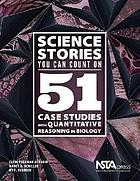NoveList is the premier database of reading recommendations. NoveList provides intuitive book suggestions that inspire adult and young readers’ love of the written word.
NoveList K-8 is a reading recommendation database which focuses on elementary and middle school students.
 Common Core Reading Lessons: Pairing Literary and Nonfiction Texts to Promote Deeper Understanding
by
Angie Stooksbury; Stacey O'Reilly
Common Core Reading Lessons: Pairing Literary and Nonfiction Texts to Promote Deeper Understanding
by
Angie Stooksbury; Stacey O'Reilly
 The Wiley International Handbook of History Teaching and Learning
by
Scott Alan Metzger, Lauren McArthur Harris
The Wiley International Handbook of History Teaching and Learning
by
Scott Alan Metzger, Lauren McArthur Harris
 Surfing the Past: Digital Learners in the History Class
by
Olivier Nyirubugara
Surfing the Past: Digital Learners in the History Class
by
Olivier Nyirubugara
 Teaching Science with Interactive Notebooks
by
Kellie Marcarelli
Teaching Science with Interactive Notebooks
by
Kellie Marcarelli
 Citizen Science: 15 Lessons that Bring Biology to Life, 6-12
by
Nancy Trautmann
Citizen Science: 15 Lessons that Bring Biology to Life, 6-12
by
Nancy Trautmann
 Exploring the Intersection of Science Education and 21st Century Skills
by
Margaret L. Hilton
Exploring the Intersection of Science Education and 21st Century Skills
by
Margaret L. Hilton
 Argument-Driven Inquiry in Third Grade Science: Three-Dimensional Investigations
by
Victor Sampson; Ashley Murphy
Argument-Driven Inquiry in Third Grade Science: Three-Dimensional Investigations
by
Victor Sampson; Ashley Murphy
 Evolution in Perspective: The Science Teacher's Compendium
by
Rodger W. Bybee
Evolution in Perspective: The Science Teacher's Compendium
by
Rodger W. Bybee
 Secrets to Success for Science Teachers
by
Ellen Kottler; Victoria Brookhart Costa
Secrets to Success for Science Teachers
by
Ellen Kottler; Victoria Brookhart Costa
 Science Stories You Can Count On: 51 Case Studies with Quantitative Reasoning in Biology
by
Clyde Freeman Herreid; Nancy A. Schiller; Ky F. Herreid
Science Stories You Can Count On: 51 Case Studies with Quantitative Reasoning in Biology
by
Clyde Freeman Herreid; Nancy A. Schiller; Ky F. Herreid
